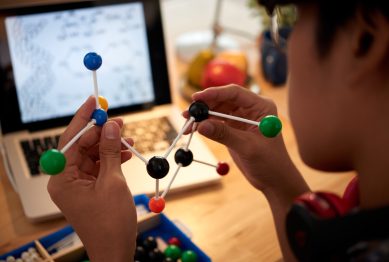The impact of technology on modern education is redefining how knowledge is delivered and absorbed. In 2025, schools, universities, and training programs are embracing tools such as artificial intelligence, virtual reality, and adaptive learning systems. These tools are not only improving access to education but also making it more personalized, interactive, and effective. However, as technology becomes more embedded in education, there is an urgent need to consider how to use it responsibly, effectively, and in ways that keep students engaged while preserving the human connection in learning.

A Global EdTech Boom
The education technology sector is experiencing remarkable growth. Projections indicate the global EdTech market will continue expanding at double-digit annual rates for the foreseeable future. Several factors are driving this boom: the need for remote learning solutions, the growth of AI-powered educational tools, and increased investment from both governments and private companies. Schools in developed countries are upgrading their classrooms with interactive displays and cloud-based platforms, while developing nations are adopting mobile-based learning solutions to reach underserved communities.
This growth is not just about convenience; it reflects a shift in how education is viewed. Technology is now a core component of teaching strategies rather than an optional enhancement.
Personalized and Adaptive Learning
One of the most transformative developments in modern education is the rise of adaptive learning systems. These platforms use algorithms to assess a student’s performance in real time, adjusting the, difficulty level, and pace to match the learner’s needs. For example, a student struggling with algebra can receive additional practice problems and targeted explanations, while another student who has mastered the topic can advance to more complex material.
This personalized approach is a game changer for addressing the different learning speeds and styles found in any classroom. It allows students to progress without feeling held back or left behind, and it gives teachers actionable insights into where their students need extra attention.
Generative AI and Intelligent Tutoring Systems
Generative AI is reshaping the role of tutoring in education. Intelligent Tutoring Systems (ITS) powered by AI can now provide one-on-one assistance that mimics the experience of working with a human tutor. These systems can create practice questions, give step-by-step explanations, and even simulate conversations to help students think critically about problems.
While ITS technology improves accessibility to quality tutoring, it comes with challenges. There are concerns about the accuracy of AI-generated, potential bias in training data, and the risk that students may become overly reliant on automated assistance. The most effective use of AI tutoring comes when it is combined with human guidance.
Immersive Learning with AR and VR
Augmented reality (AR) and virtual reality (VR) are making learning more engaging by creating immersive experiences. In VR, students can explore historical sites, conduct complex science experiments, or simulate engineering projects without leaving the classroom. AR brings learning materials to life by overlaying digital on real-world objects, turning a biology textbook into an interactive exploration of the human body.
Research indicates that these immersive tools improve retention rates and foster deeper understanding by allowing students to learn through active participation rather than passive observation.
Mobile Learning and Smart Classrooms
Mobile learning, or m-learning, is enabling education to happen anywhere and anytime. With tablets, smartphones, and wearable devices, lessons are no longer tied to a physical location. This flexibility is particularly valuable for learners, remote students, and professionals seeking continuing education.
In parallel, smart classrooms are becoming more common. Internet of Things (IoT) devices can automatically adjust lighting, temperature, and audio-visual settings to optimize the learning environment. Attendance tracking and performance monitoring can now be automated, reducing administrative tasks for teachers.
AI as an Educator’s Assistant
Artificial intelligence is not just transforming student learning; it is also becoming an invaluable tool for teachers. AI-driven platforms help educators design lesson plans, grade assignments, and analyze student data to identify trends. This automation frees up time for teachers to focus on mentoring, discussion, and creative instruction.
Some educators report saving hours each week through AI-assisted grading and lesson preparation, which can be reinvested into providing more personalized feedback and supporting struggling students.
Ethical AI Use and Student Awareness
As AI becomes a staple in education, conversations around ethical use are growing louder. Students are increasingly aware of the importance of using AI responsibly—both in schoolwork and in future careers. Many institutions are adopting policies that require students to disclose when AI tools have been used, promoting transparency and academic integrity.
This focus on ethics is critical, as it helps students learn to evaluate AI outputs critically, identify potential biases, and understand the limits of automated assistance.
Balancing Technology with Human Connection
While technology offers numerous benefits, there are also potential downsides. Too much screen time can negatively affect attention spans, social skills, and mental health. Some educators have observed declines in reading and math skills when technology is used without a clear pedagogical framework.
The most effective learning environments integrate technology as a supplement to, rather than a replacement for, face-to-face interaction. Teachers remain essential for providing mentorship, fostering discussion, and developing the social and emotional skills that cannot be replicated by machines.
Global Collaboration Through Virtual Exchange
One of the most exciting developments is the rise of virtual exchange programs. These initiatives connect classrooms around the world, allowing students to collaborate on projects, share cultural perspectives, and develop global competencies. This type of collaboration builds teamwork, communication skills, and cross-cultural understanding—skills that are increasingly valuable in today’s interconnected world.
Practical Strategies for Implementing Technology in Education
- Set Clear Learning Objectives
Start by identifying the goals for technology integration, whether they involve improving engagement, boosting accessibility, or enhancing subject mastery. - Adopt a Blended Learning Model
Combine digital tools with traditional teaching to maximize the benefits of both approaches. - Focus on Accessibility
Choose tools that support students with different learning needs and work well in varying internet and device conditions. - Train Both Teachers and Students
Provide training in AI literacy, online safety, and responsible technology use. - Protect Student Well-Being
Limit screen time where possible and incorporate activities that promote mental and physical health. - Measure Effectiveness Regularly
Monitor whether the technology is improving learning outcomes, not just whether it is being used.
Future Trends in Education Technology
The next wave of educational innovation will likely include:
- Mixed Reality Learning combining AR and VR for seamless experiences.
- Blockchain for Academic Records to provide secure, verifiable credentials.
- AI-Powered Career Guidance to align education with future job markets.
- Sustainable EdTech Solutions that reduce environmental impact.
These trends point toward a more interconnected, data-driven, and sustainable education system.
Conclusion
The impact of technology on modern education in 2025 is profound. From AI-powered tutoring to immersive AR experiences, these tools are changing how students learn and how teachers teach. However, the success of these innovations depends on balance—using technology to enhance, not replace, the human connections and critical thinking skills that remain central to education.
By integrating technology with purpose, prioritizing ethical use, and maintaining a focus on student well-being, education systems can prepare learners for a world where digital literacy is just as essential as traditional academics.
Reference
- Education Technology Investment in 2025: https://www.gsineducation.com
- Focus on Effective EdTech Usage, https://www.techlearning.com
- AR and VR in Classrooms: A New Era of Immersive Learning, https://www.iscuelaone.com









